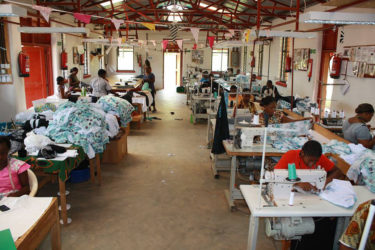The word slow is not one you would associate with fashion and how the industry operates in the grand scheme of things. Given the whole concept of fashion, moving slowly makes it seem uninteresting and dreadful. However, the fast pace fashion moves at has fostered several sustainability problems. An exhaustion of fossil fuels through fabric and garment production and transportation in addition to fresh water reservoirs being increasingly reduced significantly for cotton crop irrigation are just two of the huge negative impacts fashion has had on the environment.

What the slow fashion movement does is position itself in the fast-paced fashion world through fair principles for all. Its aim is to make the industry’s stakeholders more aware of the effects of mass production on society, culture and its environment.
However, most consumers purchase clothing without any thought being given to which is the most ethical brand. Most individuals tend to base their decisions on quality, price and value for money. And since transparency is an airy dream for most brands, consumers are uninterested in how their clothes are made.

Brands, in turn, capitalize on consumer’s purchasing motivations by aiming for the lowest price and a constant repeat of trend cycles to maintain profits. The simple reality is the consumer is totally disconnected from the story and processes behind the making of their clothes.
While the notion of slow fashion might be seen as something foreign and unnecessary to the average Caribbean consumer, the truth is the majority of us are contributing to the negative impacts of fast fashion, because we are supporting the system by purchasing the clothes.
Most of us are forced to shop on a budget because of our incomes, which would most naturally mean playing into the system of buying cheap, mass-produced clothes. However, while transparency is a foreign topic and we continue to be stuffed with better deals it is crucially important that we find ways to reduce our carbon footprint. Whether it is through the creative side sector or as a consumer, we must all play our part.
Three researchers from the Master in Strategic Leadership towards Sustainability programme in Sweden state that in order for fashion to fully transform its supply chain to being completely green and ethical, it must consider certain principles. They list these principles as key to achieving this: Seeing the bigger picture, Consumption Cuts, Diversity, Respecting People, Acknowledging Human Needs, Building Relationships, Resourcefulness, Profitability, Maintaining Quality and Beauty and Practicing Consciousness.
While I don’t foresee any significant leaps in the regional fashion industry because there is a lack of creative knowledge and mentorship from established designers, incorporating slow movement fashion principles is something that designers should consider. Personally, I feel that whilst places like China, Bangladesh and Vietnam have a long history of mass producing under poor conditions and there is so much stigma attached to those places, our region can offer the means to ethical fashion production.
This has already started to happen in places where people have least expected fashion production to come from. Many brands like ASOS support eco-factories in places like rural Kenya.
It is also important, that our designers practice resourcefulness. Many local designers choose to import materials. However, using local materials and resources where possible allows for the creation of a more niche-like product. This also puts less strain on transportation and so forth. Using production and skills from specific areas also ensures talent is not compromised.
While these are just two examples of how we can progress the business side of the fashion industry to keep up with global phenomenon that fashion is seemingly latching onto, we must remember that pioneering relatively new avenues in fashion can be our way of gaining fashion capital status.
On the flip side, while businesses have a responsibility to contribute to the slow movement of fashion, as consumers we must remember how purchasing recklessly influences our carbon footprint. While supporting ethical brands can be expensive, you can choose to restyle old pieces or indulge in thrift shopping. Always remember to research the brands before you buy into them. Some companies are working towards sustainable and ethical supply chains and while there is no one-size-fits-all strategy to apply slow movement to brands, some designers and retailers are using aspects of it to create market presence and to appear more appealing.
While these principles can be seen as heavy to stomach and seemingly make fashion and style feel more complex to achieve and enjoy, we must remember that different elements and approaches can be used. And lest we forget, it’s fashionable to care about the environment.





